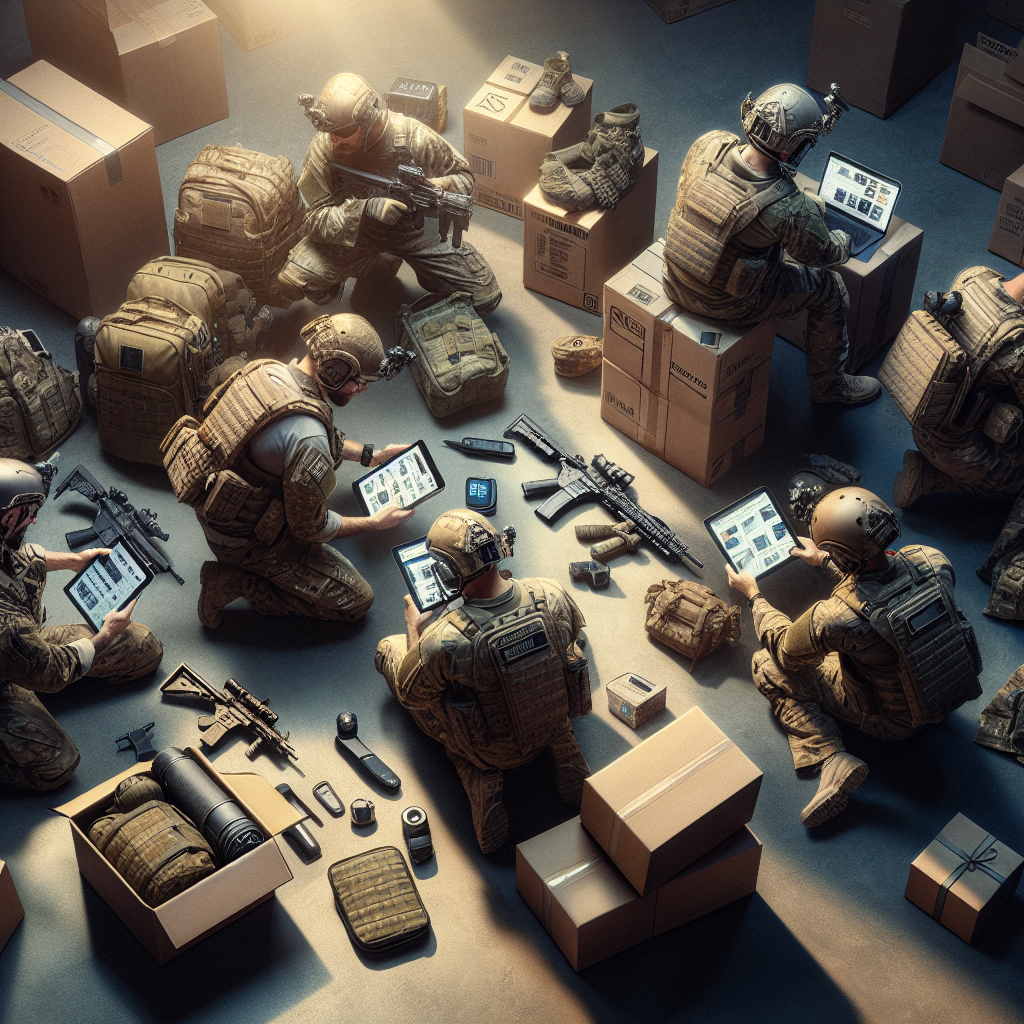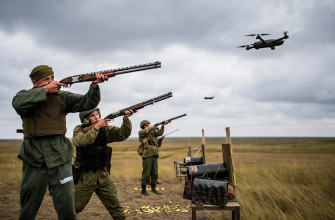
The army buys everything it wears. They buy not only shoes and uniforms, the rapid wear and tear of which at the front does not allow them to fit into the long terms of use according to the rear documents. It is enough to type in the search “helmet/armor vest/ sight/ thermal imager to buy” and you will immediately jump out a sea of commercial offers for a lot of money.
The people’s military-industrial complex that Putin and Belousov talked so much about is selling its drones and electronic warfare equipment directly to the military. Businesses get tired of waiting for the Defense Ministry to accept their drones or body armor for procurement through a long procedure and put it all up on marketplaces. For the most part, all goods belong to civilian or mixed categories.
But there are among the ads and purely military, “decommissioned” devices, which can not be in civilian circulation. Since the troops are not provided with front-line transportation as needed, the formations buy or receive civilian cars from volunteers. And they buy spare parts for them out of their allowance.
In the Israeli army, the treasury reimburses the boots bought by parents for a soldier. In Russia and Ukraine it does not. And everything else is not compensated either. As a result, at a new round of historical development of the RF Armed Forces and the AFU quickly emerged and became an integral part of the military machine figures of the past – marquettes.
According to Ozhegov’s Dictionary MARKITANT, a, m. In the 18th-19th centuries: a merchant of edibles, drinks and various small goods in the army on a campaign.
There were fabulous times when confectioners and barbers were found in the army of Louis XIV. Over time, along with the men, many ladies went into the marquettes. They obeyed military regulations and took uniforms. The Germans in the 19th century had one marquis with an assistant and two paired wagons per battalion. In the Imperial Army of Russia marquettes appeared according to the statute of 1716. Since 1890 they were under the control of the commandant of the headquarters.
Everything is back. As 200 years ago, the treasury supplies the soldiers with rifles and helmets. Everything above the norms is purchased with their own money. Only now the marquis trades through Ozon, Wildberries and Avito. Food delivery to the trenches in some areas is also organized, with a risk premium for the courier.
Ukraine is traditionally considered a weak state in Russia. There, the sale of high-quality body armor to soldiers instead of weak government vests does not surprise anyone. But according to the many stories of front-line soldiers, Russia differs little in this respect.









As someone who’s into prepping, I’ve noticed a lot of military-grade gear becoming more accessible online. It’s a double-edged sword—it helps individuals prepare, but it also shows how underfunded some military operations are.
I’ve been following this trend for years. Online stores are a lifesaver for soldiers and survival enthusiasts alike. The demand for tactical gear is only going to grow as conflicts become more unpredictable.
This is a fascinating take on how e-commerce is reshaping war logistics. It’s crazy to think that soldiers are now shopping for survival gear the same way we shop for groceries!
This issue raises an important question: if soldiers are buying their own gear, how reliable is the equipment provided by governments? It seems like a major gap in military logistics.
It’s heartbreaking to see soldiers having to spend their own money on protective gear. Governments should prioritize their safety—it’s the least they can do for those risking their lives.
This article really highlights the struggles modern soldiers face. It’s shocking that in some cases, soldiers have to buy their own gear. Governments need to step up and ensure proper supplies for their troops!
Trump’s trade war strategy feels like walking a tightrope. 🌍⚖️ The potential for a global recession is real, but could this also be a power move to secure U.S. dominance? Time will tell. ⏳📉
This article really highlights how much soldiers rely on their own resources and private markets to get essential gear. It’s surprising and somewhat concerning to see that front-line troops have to buy things like body armor and boots themselves, especially when these items are so critical for their safety. The comparison with historical marquettes shows how some practices never fully disappear, just change form over time. It makes me think about the challenges military personnel face beyond just combat, including financial and logistical burdens that are not often talked about openly.
Oh wow, so soldiers are basically running their own eBay shops now? 😂 Nothing says modern warfare like buying your own armor and drone gadgets off the internet while waiting for the government to catch up. I guess if Louis XIV had a Wildberries subscription, history would’ve been way more stylish 👑🛒💥. Here’s to hoping the next frontline update includes a fast shipping option with gift wrapping! 🎁💣
This really highlights how much soldiers have to rely on their own resources beyond what the military provides, which is kind of shocking. The fact that something as essential as body armor or even boots isn’t fully covered by the state and people have to buy them from marketplaces feels like a step back in time. It also makes you think about the challenges these troops face not just on the battlefield but even in getting the basic gear needed for safety. The comparison with older military practices and other countries adds an interesting perspective too. Definitely makes you appreciate the complexity behind military logistics and support 👀🪖
It’s fascinating to see how history repeats itself in modern times, especially with the resurgence of marquettes who now operate through online marketplaces instead of traditional campaign wagons. The practical reality of soldiers having to buy their own essential gear because official supplies fall short really highlights gaps in military logistics that I hadn’t fully considered before. It makes you wonder how many other aspects of frontline life rely heavily on personal resources and ingenuity rather than institutional support. The comparison with the Israeli army’s reimbursement policies is striking and underscores how different military cultures handle the welfare of their soldiers. This glimpse into the realities behind the battlefield underscores the complexity of modern warfare logistics beyond just tactics and combat.
It is striking how history has a way of repeating itself, sometimes in the most unexpected forms. The idea that soldiers now have to rely on marketplaces and even volunteer efforts to obtain equipment and necessities, much like merchants in past centuries, reveals a deeply human aspect of military life that official reports often overlook. This blend of old and new, where modern technology like drones intersects with age-old practices of personal initiative and commerce on the front lines, makes one reflect on the enduring complexity of war beyond the battlefield. It raises questions about the responsibility of the state toward those it sends to fight and the resilience required by individuals to adapt within such systems. The human element remains central: despite technological advances and changing times, the practical realities faced by soldiers echo stories from centuries ago, highlighting both vulnerability and ingenuity in equal measure.
Wow, so the soldiers basically have to become their own supply officers now? Selling military gear on marketplaces like Ozon and Wildberries sounds more like an online shopping spree than a war effort 🤦♂️🥴 Is this modern warfare or just a bizarre episode of Army eBay? At least the old marquettes had uniforms and some structure—now it’s more like a chaotic garage sale with body armor and thermal imagers thrown in. Meanwhile, the treasury barely covers rifles and helmets, and the rest? Better break out your wallet! 💸🛒 I guess if you want to survive at the front, you’ll need a side hustle selling boots and spare parts too. Somehow feels less like defending a country and more like a twisted Amazon Prime nightmare 📦🔥
It’s fascinating how history repeats itself in unexpected ways, especially when it comes to the practicalities of war. The idea that soldiers now rely on online marketplaces for essential gear just like marquettes of the past shows how some challenges persist despite advancing technology. It also highlights a stark contrast between official supply systems and the realities on the ground, where soldiers have to find creative solutions to stay equipped. The comparison with other countries’ practices adds an interesting perspective on how different militaries handle soldier welfare. This glimpse into the everyday struggles behind the scenes really changes the way I think about what it means to be prepared for conflict today.
It’s striking how history often seems to repeat itself in unexpected ways, especially when it comes to the human aspects behind the machinery of war. The image of modern soldiers relying on commercial marketplaces to equip themselves echoes back to centuries-old practices where merchants accompanied armies, bridging the gap between official supply and the needs of individuals. This blending of past and present reveals something profound about the continuity of human resilience and adaptation amid conflict. Despite all the technological advances, at the core, the struggle to provide for oneself in times of war remains deeply personal and immediate, a reminder that even in vast systems like armies, individual realities shape the greater story. It makes one reflect on how much progress means when basic necessities still fall into the realm of personal effort rather than institutional support. 🌿
This whole situation sounds like a total mess 🤯 Soldiers having to buy their own gear while the military-industrial complex just sits back and sells off their stuff online? Seriously, how is this still happening in the 21st century? 😤 Watching history repeat itself with marquettes trading through online marketplaces is almost darkly ironic 😂 Meanwhile, the guys on the front lines are stuck paying out of pocket like some kind of DIY army. Is this how a modern military should operate? Feels like a massive failure of logistics and responsibility! 💥
{comment: this piece nails the strange economy of war supplies, where front line gear is bought on marketplaces and the soldiers end up using civilian cars funded by volunteers, like a charity auction with chain of command. the marquettes and the old references to marquis with wagons somehow give the whole story a historical cosplay vibe while the reality is just budget spreadsheets and improvisation. it makes you wonder if the frontline has its own version of curbside pickup and if the soldiers are the customers or the product. honestly not surprised that the same system that fingers everything through donkey paperwork ends up with civilians paying out of pocket for protection. the whole thing reads like a history lesson meets modern thrift store, and somehow that mix is oddly entertaining 🤔}
I feel alarmed that soldiers must self-procure gear via marketplaces, exposing safety and legal risks; urgent procurement reform and stricter quality control needed ⚠️🪖📦💸
The direct commercialization of essential military supplies through marketplaces highlights a systemic breakdown in standard procurement, forcing soldiers to rely on informal supply chains similar to historical provisioning structures.